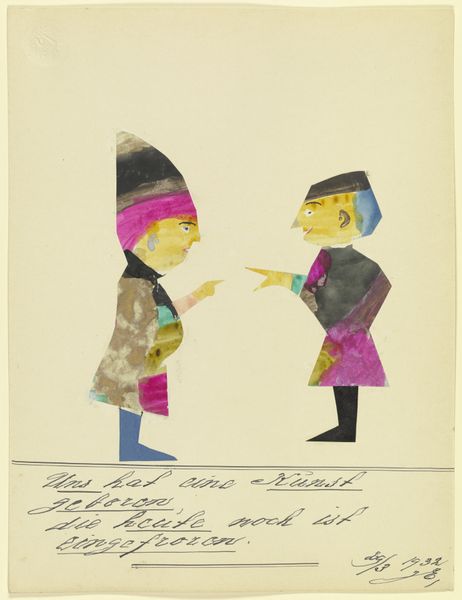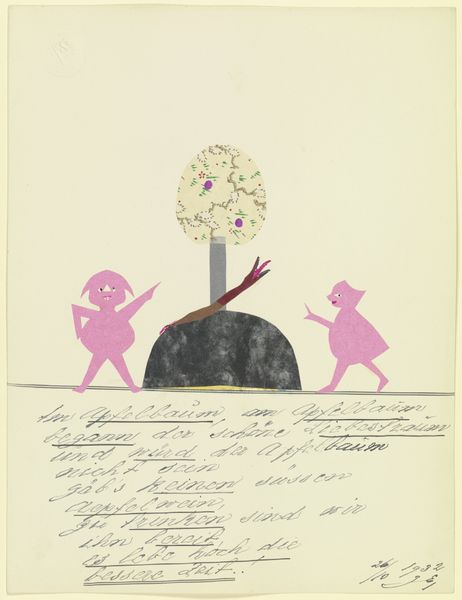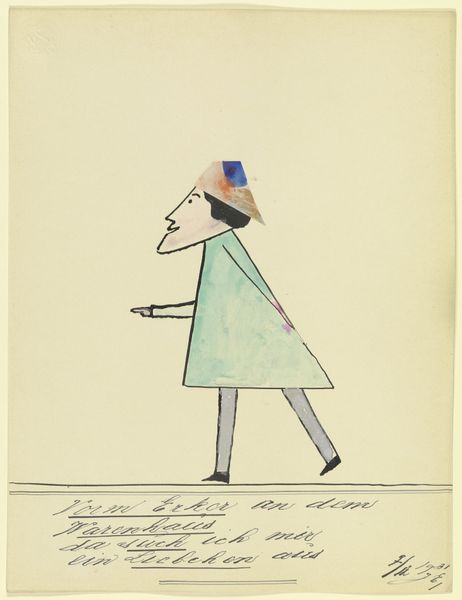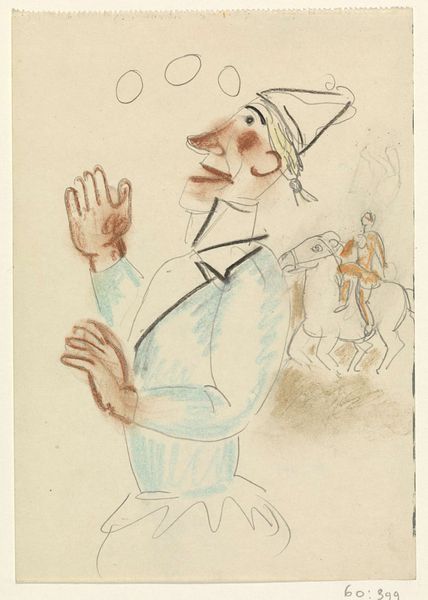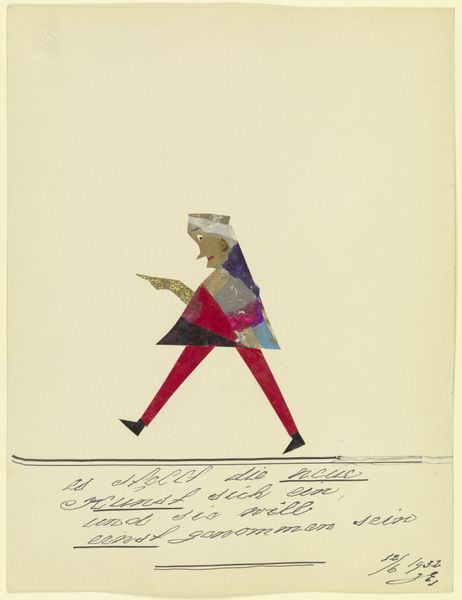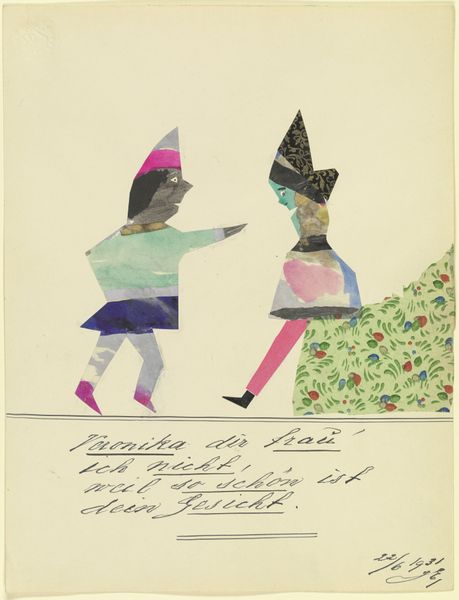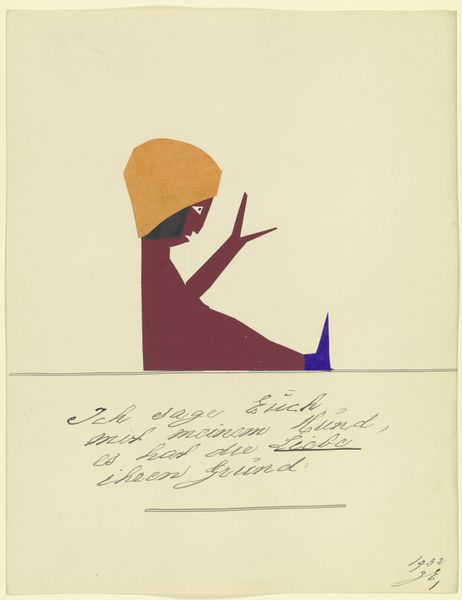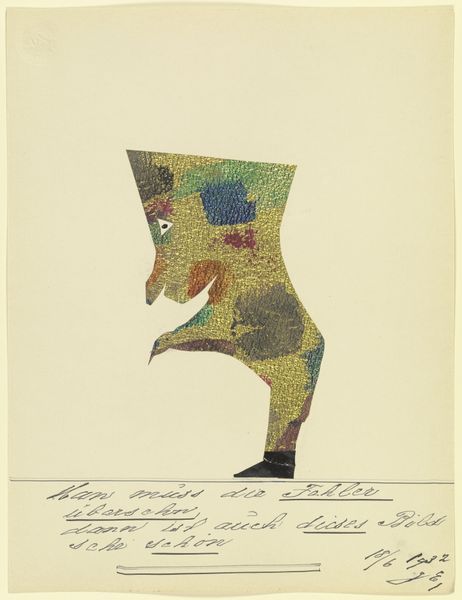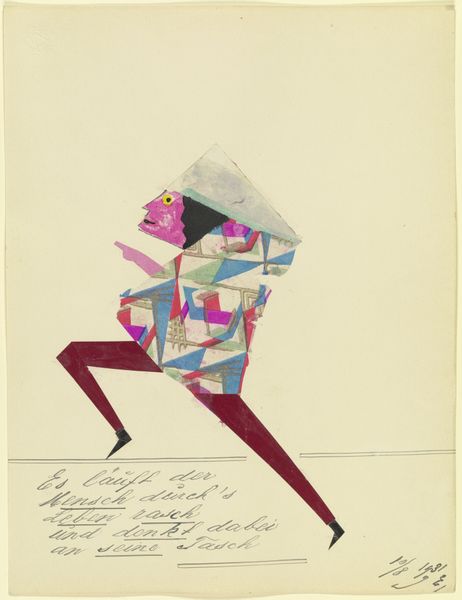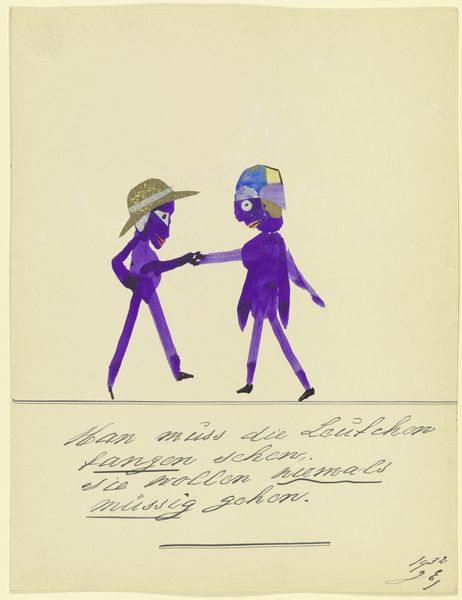
drawing, collage, paper, ink, indian-ink
#
portrait
#
art-deco
#
drawing
#
collage
#
figuration
#
paper
#
flat colour
#
ink
#
indian-ink
Copyright: Public Domain
Curator: At first glance, I see a world reduced to shapes. Almost a child's story rendered with the clean, deliberate lines of the Art Deco movement. It's intriguing, stark even. Editor: Exactly! It feels like a half-remembered dream, doesn’t it? Unsettling, but playful. Like a puppet show gone slightly awry. Curator: This is John Elsas' 1932 work, "16160 (_Never tempt ..._)" created using ink and collage on paper, housed here at the Städel Museum. Elsas, of course, lived through tremendous upheaval. Editor: "Never tempt..." What a wonderfully ominous, yet deliciously vague title. Tempt whom? And with what? Curator: Exactly! Think about Weimar-era anxieties—the hyperinflation, the political polarization. There’s a vulnerability embodied by that smaller figure, seemingly facing an ambiguous authority. Editor: He does look tiny and accusing! But what’s he pointing at exactly? And who is the large triangular figure? Are they both naked? And that block the large figure is standing on -- the vantage point gives all the power, doesn't it. Is he the establishment? Curator: Well, perhaps. It reminds us that, even with simplified forms, artists embed the realities of power. Elsas, as a Jewish artist, was soon to feel that power crushing him. The directness of the drawing mirrors the impending political and cultural catastrophe. Editor: The way these figures are so naked yet stylized. All sharp corners and flat colors... almost dehumanized, or perhaps…re-humanized as essential forms, as the very building blocks of humanity stripped bare before some impending storm. Curator: And the text, written beneath—illegible now for many, yet it once carried immediate meaning. We see these figures trapped in a specific moment, judged and judging. Elsas shows us that social instability renders even the most basic interactions fraught with tension. Editor: Absolutely. Now, looking again with that context… yes, the whole scene takes on a decidedly sinister tone. What felt light now carries a definite weight. Like a visual scream caught in a silent film. Thank you; it always surprises me how historical context amplifies artwork, resonating even decades later. Curator: My pleasure. Art is inherently about that intersection of past, present, and perspective. The collage makes me appreciate this dialogue of historical knowledge and your artistic take.
Comments
No comments
Be the first to comment and join the conversation on the ultimate creative platform.
